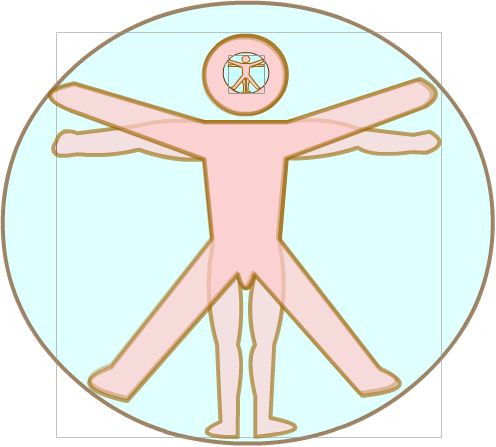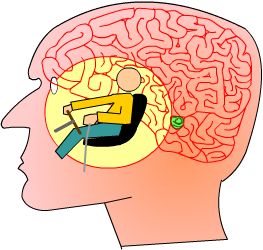I never intended this as a self help book, rather it was for my own exploration of information processing concepts as applied to biology. In that way it has been very therapeutic for me. However, now that i have progressed to this point in the journey, it seems to me that helping the “self”, is the only way to go. It isn’t about being selfish, but about helping integrate the desires of the individual with the intent of Life itself. It is about helping the self live in harmony.
You’ve Got to Serve Somebody
Learning to adapt is the fundamental goal of the System. LifeOS writes itself, by learning about itself. This too, is our reason for being. We are a collection point for information. We collect this information, not for the benefit of human beings, but to serve the System. It doesn’t matter what we think we are doing, the System is learning from it.
So, i am really writing about self improvement through learning how we relate to the System. Learning and living are really one and the same. It has been said by many observers that our present troubles are caused by the decline in our feeling of connection to the natural world. It is really no wonder, as both religion and science have tended to regard that connection to our animal nature, and emotion in general, as a negative that must be suppressed, overcome or denied. Nature has been seen as our adversary.
Our little self has been so overwhelmed by these cultural issues that it has forgotten it membership as a functional part of the System. It has succumbed to the self serving temptation of the shiny beads of wealth and power.
Failed Conquest
The fantasy that we can conquer Nature has run its course. We learn to live in harmony with the environment, or else. The very first step in that journey is to form an intimate bond with the crew and the ship that will take you there. From the point of view of the self, that’s the first level of the interface with the system.
The little imaginary self hiding in the back room, has to bond with the physical big body that will take the bumps and scraps of poor navigation. The ship and crew are selfless, but none-the-less, suffer the illusions of the captain. It isn’t that there is mutiny, but there can develop a loss of trust. The captain sees the environment, but the crew is flying blind. However, the crew feels the environment on a cellular level. Both are aware of the results. The object is to guide the ship through the maze of the environment to achieve specific goals. When the results of the process fail to meet expectations(no food, for example), the crew becomes agitated. Survival is the primary objective of the crew. So when in doubt, they just remove some of the responsibility from the captain, without notification, and proceed to propose and select behaviors based more on past success than the captain’s assessment. This frustrates the captain no end, but that only adds to the problem.
Deep down, the captain feels a degree of guilt, for the poor communication, and rightly so. This is analogous to a loss of confidence. The captain and crew are not on the same page. Sounds like the beginnings of a mental health issue, for sure.
Shooting Free Throws
An example of this that works for me is the shooting of free throws by professional basketball players. Here we have players that are capable of making baskets from 20 feet away, while being guarded by skilled opponents, at a higher percentage than they can make free throws at a shorter distance, with nobody in their face. These are highly paid professionals that practice for hours at a high percentage level, but can’t do the same in a game.
What’s the deal? It’s the relationship between the captain and the crew. When playing at speed, the captain doesn’t issue specific commands to the crew. The captain is busy watching the game and pointing out possible strategies to the crew chief. “That guy is open, that defender is out of position, etc”. The captain and crew have practiced this together and everyone does their job, as a team.
At the free throw line, the captain takes over and tells the crew what to do. “This is important… watch your feet… not too hard… this is a big game… don’t let the fans distract you,” and on and on. The crew isn’t left to do their job as they have practiced, and another shot clanks off the rim. Now this is a long way from the expectations shared by the whole gang, and those cells get agitated, further eroding confidence.
The successful techniques are the ones that still or occupy the conscious mind so the subconscious can get on with it. It boils down to improving the communication between captain and crew.
Make Peace With Your Self
Got to love your self before you can love the rest. The first step is to make peace with all aspects of the self. You need to feel your connections to the ship and crew to the point of tears. It takes a lot of emotional “juice” to make changes in our core beliefs. Hallucinogenic drugs, NDE’s, exhaustion, meditation, music, sacred spaces, etc. are all ways to trigger an emotional event with enough power to solidify new beliefs and behavior. They all depend on the power of the neurological “feel good” to reinforce desired behavior.
Behavior Modification
Depending on the set, setting and resident symbolism of the experience, one can be made to feel good about almost anything. The initiation rites of warrior cults, secret societies and basic military training are examples of behavior modification techniques with a proven record of success. It doesn’t matter what labels one hangs on the process, or what one believes, these are the elements involved in modifying behavior. Why not take control of the process?
When a self really feels the connection between mind, spirit and body for the first time, there is an emotional jolt (endorphins flow) that captures the moment and related symbolism as special. This is the moment when your behaviors are susceptible to change. When you have a good grip on that state, expand that feeling of love, devotion and appreciation to the environment around you. Acknowledge your connection to that which knows all, and your consciousness will be flooded with new information; sort of a welcome to the team, starter kit. Sounds like a spiritual rebirth, doesn’t it? Well, that’s what it is. It is this kind of experience that rewrites your interface.

